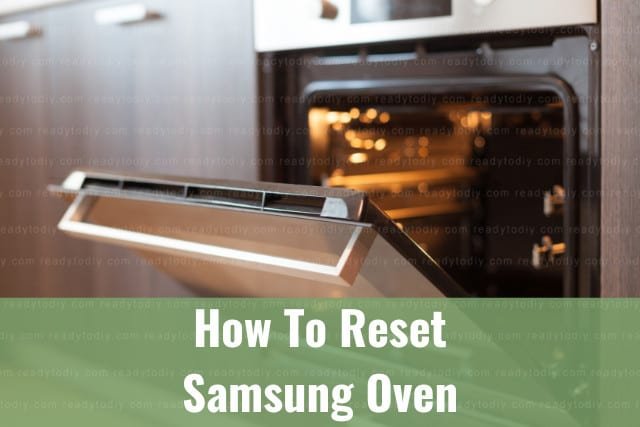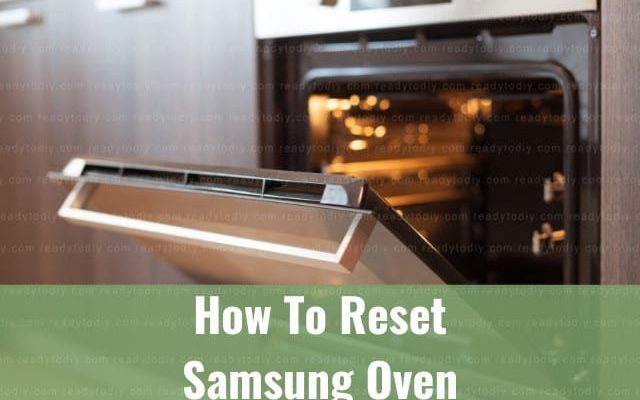
The “E1” code is essentially your oven’s way of communicating a problem. Imagine it as a red flag waving to catch your attention — something’s not quite right, and you need to fix it. It usually indicates an issue with the internal temperature sensor or a general malfunction. Understanding how to reset your Samsung oven or range after seeing this error can save you time, a potentially costly professional service call, and get you back to making those delicious meals.
Understanding Error Code E1 on Samsung Ovens
Let’s unravel what this error code is trying to tell you. Think of the error as your oven’s way of saying, “Hey, something’s not quite right with my internal systems!” Specifically, the “E1” code is often related to a malfunction in the temperature sensor. The sensor is like the thermostat of your oven — just as you wouldn’t want the heating in your house to go haywire, you don’t want your oven cooking your food at incorrect temperatures.
This error can also result from issues with the electrical connection or even a software glitch within the appliance. The temperature sensor might be faulty or not properly connected, and in rare cases, it could be damaged due to normal wear and tear. Luckily, this isn’t necessarily a disaster. Like rebooting a computer, sometimes your oven just needs a simple reset to get back on track.
Before you reach for your phone to call in a serviceman, it’s worth trying a few steps yourself. Understanding the cause can not only help you fix the problem but might also empower you to handle similar issues on other appliances. Remember, when technology gives you signals like this, it’s often asking for your attention rather than immediate panic.
Steps to Reset Your Samsung Oven or Range
Ready to tackle this issue? Let’s get you started on resetting your Samsung oven or range. Think of this process as giving your oven a much-needed break and restart. It’s similar to when your phone acts up, and you restart it to clear temporary glitches. The first step is to ensure your oven is completely off. Make sure that it’s unplugged from the wall outlet. If your oven is hardwired, locate the circuit breaker and turn it off.
Once the power is off, wait for a few minutes, typically around 5 to 10. This brief wait allows the system to reset completely, just like when you power down a computer or smartphone. After this short pause, go ahead and restore power to the appliance by plugging it back in or flipping the circuit breaker. Turn your oven on and check if the error code has disappeared.
If the “E1” error code persists, it might be time to dig a little deeper. Double-check connections to the temperature sensor, ensuring it’s securely connected and free from any visible damage. In some instances, gently reconnecting or securing loose connections can resolve the problem. However, should these steps not resolve the issue, it may be time to consider further troubleshooting or professional assistance.
When to Seek Professional Help
Sometimes, even with the best efforts, the stubborn “E1” code might refuse to budge. This is like trying to fix a plumbing issue at home — if the water keeps leaking despite your repeated attempts, it might be time to call a plumber. When the reset doesn’t resolve the problem, and you’ve checked the sensor connections, the issue might be a bit more complex.
You might be dealing with a broken sensor that requires replacement, or an internal circuitry issue that needs expert hands. If you’re not comfortable with these types of fixes, or if you’ve tried all the initial steps without success, it’s wise to seek professional help. A certified technician can accurately diagnose and resolve the issue, ensuring your oven is back in working order without any risk of further damage.
Remember that while it’s tempting to save money by handling repairs yourself, safety should always be your top priority. Handling electrical components can be risky, and a professional overhaul might be necessary to protect both your appliance and yourself.
Preventing Future Error Codes
So, how can you prevent these annoying error codes from popping up in the future? It’s a bit like regular car maintenance — you wouldn’t skip an oil change and expect your car to run smoothly forever, right? Ensure that your Samsung oven or range is kept clean and maintained according to the manufacturer’s instructions. Regularly inspect the temperature sensor and connections, keeping an eye out for any signs of wear or damage.
Consider scheduling regular maintenance checks with an appliance technician. These checks can catch potential issues before they develop into significant problems. It’s a little like getting a yearly health check-up to prevent future health issues. Being proactive can save you the headache of sudden appliance breakdowns and costly repairs later on.
Lastly, keep an eye on the overall performance of your oven. If you notice any unusual behavior, such as fluctuating temperatures or strange noises, don’t hesitate to investigate further. Catching issues early can prevent the dreaded “E1” and other error codes from disrupting your culinary adventures.
In conclusion, dealing with an “E1” error code on your Samsung oven or range doesn’t have to be a daunting task. With a little patience and the right steps, you can often resolve the issue quickly and get back to enjoying your cooking. Remember, appliances sometimes just need a little TLC to stay in top shape!
